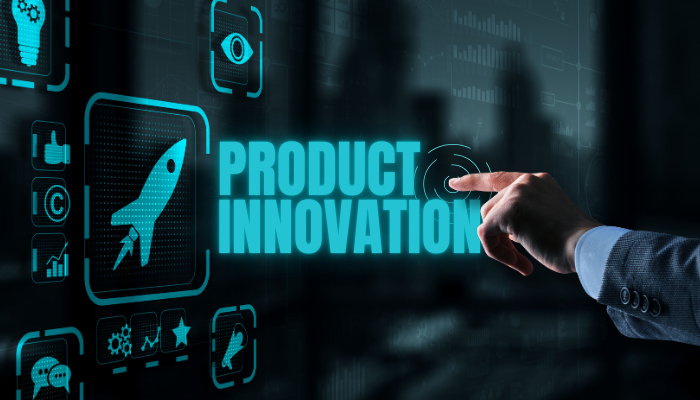“If you can’t describe what you are doing as a process, you don’t know what you’re doing.”
– W. Edwards Deming
Let’s say your product as a superhero. Who would be its biggest fan? That’s where agile personas come in. These fictional characters represent different user groups, helping your team understand their needs, motivations, and behaviors.
By creating detailed personas, you can empathize with your users and make informed decisions throughout the development process.
Research shows that, on average, every $1 invested in UX brings $100 in return, resulting in an impressive ROI of 9,900%. That’s like turning a penny into a dollar bill!
In this blog post, we’ll dive into how to create amazing agile personas that will supercharge your design process. Get ready to level up your project game!
What Are User Personas?
Okay, let’s get straight to the point.
Who would be your ideal customer?
What do they look like?
What do they care about?
What keeps them up at night?
That’s where user personas come in. They’re like fictional characters that represent different groups of people who might use your product.
Why are user personas important in agile development?
- Focus: User personas keep the team focused on designing for real users, not abstract ideas.
- Empathy: They help you step into your users’ shoes and understand their problems.
- Decision-making: They guide your choices when designing features and solving problems.
- Team Alignment: Personas ensure everyone is aligned on who the product is being built for.
- Feature Prioritization: They help prioritize features that matter most to the users, maximizing impact.
What Makes a Good Agile Persona?
Agile personas are important for creating products that truly connect with users. They offer a roadmap for understanding user behaviors, goals, and challenges, ensuring your final product meets real user needs. By using persona agile, your team can make smarter, user-centered choices.
Here’s how:
- Realistic Representation: Each persona is backed by real research, so they reflect genuine user behavior and traits.
- Goal-Oriented: Agile personas focus on user goals, making sure your team knows exactly what users want to achieve.
- Demographic Details: They include basic details like age, occupation, and location, helping to round out the persona.
- Pain Points: Personas highlight specific challenges users face, so your team can create solutions to those problems.
- Behavioral Traits: They also offer insight into habits, preferences, and motivations, shaping the design decisions.
Benefits for Agile Teams
- Improved Focus: Agile personas keep your team centered on user needs, making sure everyone’s working with the same goal in mind.
- Enhanced Collaboration: They provide a shared reference point, improving communication across your team.
- Better User Engagement: By addressing pain points, your team builds solutions that truly resonate with users, leading to higher satisfaction.
- Informed Decision-Making: With persona agile, decisions are grounded in data, eliminating guesswork in development.
- Increased Efficiency: When your team understands user needs clearly, the whole process becomes more streamlined, saving time and resources.
Also read: Agile and Continuous Improvement: Tools, Principles, and Building a Culture – Codewave Insights
Now that you know what agile personas are, let’s see why your team should start using them.
Why Should You Create Agile Personas for Teams?
Creating agile personas isn’t just another task on your to-do list—it’s a key step in building products that truly meet users’ needs. These personas represent real users, helping your team make smarter decisions based on actual requirements rather than assumptions.
Let’s dive into why agile personas are so important and how they improve your development process.
1. Focus on User-Centered Design
At the core of any product should be the user. Agile personas help your team stay focused on the people you’re designing for. By understanding their behaviors, goals, and challenges, your team can create user-centered designs that meet real needs, not just imagined ones. This keeps your product relevant and valuable to its users.
2. Improve Team Communication
With everyone focused on different tasks, team communication can sometimes get muddled. Persona agile provide a common point of reference, helping all team members—from designers to developers—stay aligned. They ensure everyone is talking about the same user, which leads to clearer discussions and better teamwork.
3. Make Better Decisions
Guesswork isn’t the best way to make decisions. Agile personas take the uncertainty out by giving your team clear insights into user preferences and pain points. This allows you to prioritize features that actually matter, helping you make more informed, user-focused decisions that lead to better outcomes.
4. Build Empathy with Your Users
When your team builds agile personas, they’re essentially stepping into the shoes of your users. This boosts empathy, encouraging everyone to think from the user’s perspective and design with more understanding. It makes your product more intuitive and solves real-world problems.
5. Prioritize and Reduce Bias
Everyone on a team has their own opinions, but persona agile help reduce personal bias. By focusing on real user needs, they ensure you prioritize the features that matter most. This keeps the team’s focus on delivering value to the end-user, rather than getting caught up in subjective ideas.
6. Create Clearer User Stories
For teams using agile frameworks like Scrum, agile personas help in writing more effective user stories. With detailed personas, your user stories will be more accurate and better aligned with user needs, ensuring your sprints are more productive.
Now that you understand the importance, let’s look at the different types of agile user personas.
Types of User Personas in Agile
When you’re building a product in an agile setting, really knowing your users is crucial. Agile personas help you understand who your users are and what they need. Let’s explore three effective methods to create these agile personas that can make your team’s work easier and more focused.
1. Proto-Persona Method
- What it is: This is a way to quickly sketch out initial personas based on what your team already knows or assumes about users.
- How to use it: Get your team together for a brainstorming session. Talk about what you already know about your target audience. Then, create rough profiles that include basic details like demographics and behaviors.
- Benefit: This method helps you kick things off quickly. You can always refine these personas later as you gather more data.
2. Qualitative Method
- What it is: This approach relies on deep conversations and observations to learn more about users’ thoughts and behaviors.
- How to use it: Sit down with current users or potential customers and conduct interviews. Ask open-ended questions about their experiences and preferences. What do they like or dislike? What challenges do they face?
- Benefit: You’ll get rich, detailed insights into what drives users and what problems they encounter. This information helps you create agile personas that truly reflect their needs.
3. Statistical/Quantitative Method
- What it is: This method uses surveys and analytics to collect numerical data about user behaviors and demographics.
- How to use it: Send out surveys to a larger group of people and analyze their responses. Use tools like Google Analytics to see how users interact with your website.
- Benefit: You’ll gain a broader understanding of your audience. This approach validates your assumptions and fine-tunes your agile personas based on actual user behavior.
Okay, so now that we’ve got a solid foundation for creating agile personas, let’s talk about what makes them truly effective.
Essential Elements of an Effective User Persona
Agile personas are essential tools that help teams design user-centered products. They represent fictional but data-driven characters, allowing teams to empathize with users and make decisions that reflect real user needs.
Let’s take a closer look at the key components of a user persona and how each element contributes to better product development.
1. Name and Background
- Give your persona a name: This helps you personalize them and make them feel more real.
- Create a brief backstory: Where did they grow up? What is their education level? What are their interests and hobbies?
2. Demographics
- Age: What is their age range?
- Gender: Are they male, female, non-binary, or prefer not to say?
- Location: Where do they live?
- Occupation: What do they do for a living?
- Income level: What is their socioeconomic status?
3. Goals and Motivations
- Primary goals: What are they trying to achieve when using your product or service?
- Secondary goals: What are their additional objectives?
- Motivations: What drives them to use your product or service? What are their underlying needs and desires?
4. Challenges and Pain Points
- Frustrations: What obstacles do they face when trying to achieve their goals?
- Pain points: What specific problems or difficulties do they encounter?
- Concerns: What are their worries or doubts about using your product or service?
5. Preferred Information Channels
- Social media: Which platforms do they use most frequently?
- Websites: What websites do they visit regularly?
- News sources: Where do they get their news?
- Offline channels: Do they prefer to get information through traditional media like newspapers or magazines?
With these essential elements in mind, let’s walk through the steps to create engaging agile personas.
Steps to Create Engaging Agile Personas
Creating effective agile personas is essential for building products that truly meet user needs. So, how do you go about creating these valuable tools? Let’s break it down step by step!
1. Determine the Target Users
Start by identifying who your target users are. Ask yourself:
- Who will benefit most from your product?
- What are their needs and preferences?
- How do they interact with similar products?
2. Conduct Comprehensive Research
Dive deep into understanding your users. Here’s how:
- Surveys and Interviews: Engage directly with potential users to gather insights about their experiences and expectations.
- Market Analysis: Look at industry trends and competitors to understand user behaviors and preferences.
- Usability Testing: Observe users interacting with existing products to pinpoint areas for improvement.
3. Analyze Collected Data
Once you’ve gathered all that valuable information, it’s time to analyze it. Focus on:
- Identifying Patterns: Look for commonalities in user feedback, which can highlight shared goals and challenges.
- Segmentation: Group your users based on similarities to create more targeted agile personas.
4. Create Detailed Persona Profiles
Now it’s time to bring your personas to life. Each agile persona should include:
- Name and Background: Give your persona a relatable name and a backstory to make them feel real.
- Demographics: Include age, gender, location, occupation, and income level.
- Goals and Motivations: Identify what they aim to achieve using your product and what drives them.
- Challenges and Pain Points: Highlight specific problems they face and concerns about using your product.
- Preferred Information Channels: Understand where they look for information, whether it’s social media, websites, or traditional media.
5. Validate Persona with Users
It’s crucial to ensure that your agile personas resonate with real users. Validate your personas by:
- Feedback Sessions: Share your personas with actual users and gather their opinions.
- Iterative Testing: Adjust your personas based on feedback to make them more accurate.
Bringing Your Personas to Life
Once you’ve developed your agile personas, it’s time to make them relatable. Here are a few creative ways to add depth:
- Persona Storytelling: Give your persona a rich backstory. For example, where did they grow up? What are their hobbies? Understanding their life can provide context for their needs.
- Write a Diary Entry: Imagine your persona reflecting on their day. What challenges did they encounter? What victories did they celebrate? This exercise helps you grasp their daily struggles and triumphs.
- Create a Social Media Profile: Set up a fictional social media account for your persona. What types of content would they share? Who would they follow? This helps you visualize their interests and social interactions.
By humanizing your agile personas in these ways, you gain deeper insights into their motivations and behaviors. This understanding is key to designing products that truly resonate with users.
Now that we’ve created agile personas, let’s look at examples to see them in action.
Examples of User Personas for Agile Teams
Creating agile personas that truly resonate with your target users is crucial for any team. Let’s look at different types of user personas, and how they vary from simple to complex, with templates you can easily use.
1. Simple Persona Example
A simple persona is quick to create but still effective. It typically includes:
- Name: “Sara, the Busy Professional”
- Demographics: 34 years old, lives in a city, works as a marketing manager.
- Goals: Improve productivity with time-saving tools.
- Challenges: Juggling work-life balance, managing team communications efficiently.
This simple approach helps you define core user needs without getting bogged down in too many details.
2. Complex Persona Example
For more intricate products, you’ll need a detailed persona. Here’s how it looks:
- Name: “Tom, the IT Director”
- Demographics: 42 years old, married, living in a suburb, earns $120,000/year.
- Background: 15+ years of experience in IT, loves technology innovations.
- Goals: Optimize the company’s IT infrastructure, reduce operational costs.
- Pain Points: Struggles with outdated tools, concerns over data security.
A complex persona includes a full backstory, motivations, and challenges, giving your team deep insight into user behaviors.
3. Templates Available
There are plenty of templates available to help you create agile personas. Websites like Xtensio and HubSpot offer free downloadable templates, allowing you to customize them based on your specific project needs.
With these examples in mind, let’s discover how to seamlessly integrate agile personas into your development.
Seamlessly Integrating Agile Personas into Development
To maximize the impact of agile personas, it’s essential to integrate them directly into your development processes. Here’s how you can do it effectively:
1. Linking Personas to User Stories
Connecting agile personas with user stories brings a human element to your backlog. Each persona represents a real user, which helps your team focus on building features that truly meet their needs.
For example, when writing a user story, frame it like, “As John, the IT Executive, I need an intuitive dashboard to monitor system performance.” This ensures that the end-user stays central throughout development.
2. Using Personas Across Development Phases
Don’t just use personas in planning—embed them in all phases of development:
- Sprint Planning: Refer back to your personas when selecting tasks, ensuring you’re building features that benefit real users.
- Design: Personas guide the design process, making sure that interfaces align with user preferences and pain points.
- Testing: Use personas to create realistic scenarios during testing, simulating how different users might interact with your product.
3. Maintaining and Updating Personas
As projects evolve, so do users’ needs. Regularly revisit your agile personas to ensure they reflect current user behaviors and goals. This might involve conducting fresh user research or tweaking personas as your product or audience changes. Keeping your personas up-to-date ensures continued relevance and value in your agile process.
How Codewave Can Help: Empowering Your Agile Teams with Effective Personas
At Codewave, we understand the pivotal role of personas in driving successful agile projects. Our team of experienced designers and developers specializes in creating engaging and insightful personas that resonate with your target audience.
We leverage user research, empathy mapping, and journey mapping to craft personas that capture the needs, motivations, and behaviors of your users.
Our services include:
- We align personas with your users’ journey: Our Customer Experience Design ensures that each agile persona is deeply connected to your users’ behavior, making every interaction smooth and intuitive.
- We create user-friendly interfaces: Our UX & UI Design team builds interfaces that meet user expectations, leading to better engagement and satisfaction.
- We refine personas using data: With Data Analytics Development, we continuously update your agile personas using real-time data, ensuring they stay accurate and actionable.
- We optimize processes based on personas: Through Process Automation, we identify and solve pain points that agile personas highlight, improving efficiency and workflows.
- We develop custom solutions tailored to personas: Our Custom Software Development ensures that the software we build aligns perfectly with the needs and characteristics of your personas, leading to better product outcomes.
Also check out our other services: Codewave- design thinking, web & mobile app development services
With that, let’s conclude the blog!
Conclusion
Congratulations! You’ve explored the wonderful world of agile personas. Remember, these aren’t just fictional characters – they’re the voices of your real users, guiding you towards creating a product they’ll love.
As the wise Maya Angelou once said, “Success is knowing your purpose in life and growing to fulfill it.” According to PriceWaterhouseCoopers (PWC), 32% of customers would leave a brand they loved after just one bad experience. Personas can help you prevent this by ensuring your product aligns with user expectations.
Don’t let your personas gather dust on a shelf! Regularly revisit and update them as you gather new user data. Codewave can be your partner in this exciting journey. With our expertise in agile development and user research, we can help you create effective personas that drive successful product outcomes.
Also read: Understanding the Agile Design Process and its Principles
Codewave is a UX first design thinking & digital transformation services company, designing & engineering innovative mobile apps, cloud, & edge solutions.







